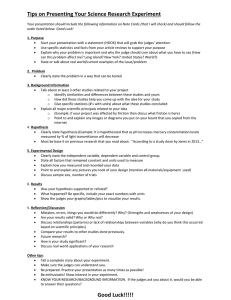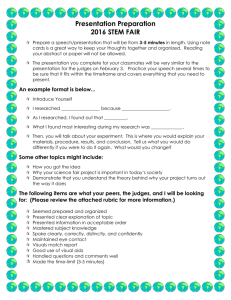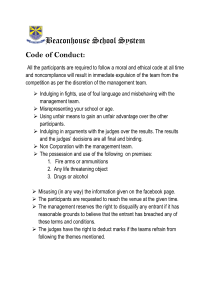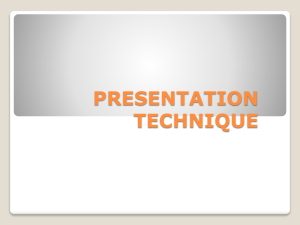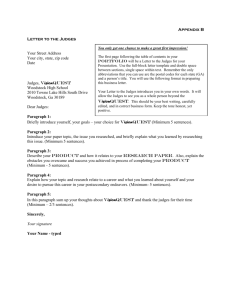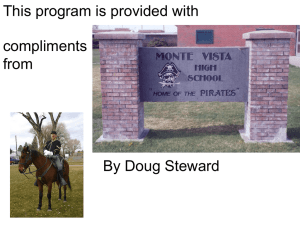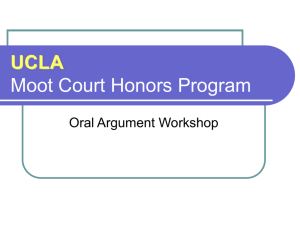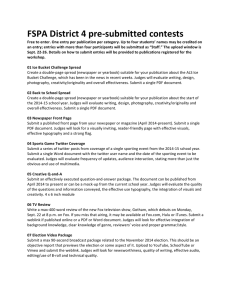30 - TIPS FOR A BEGINNER IN PUBLIC SPEAKING
advertisement
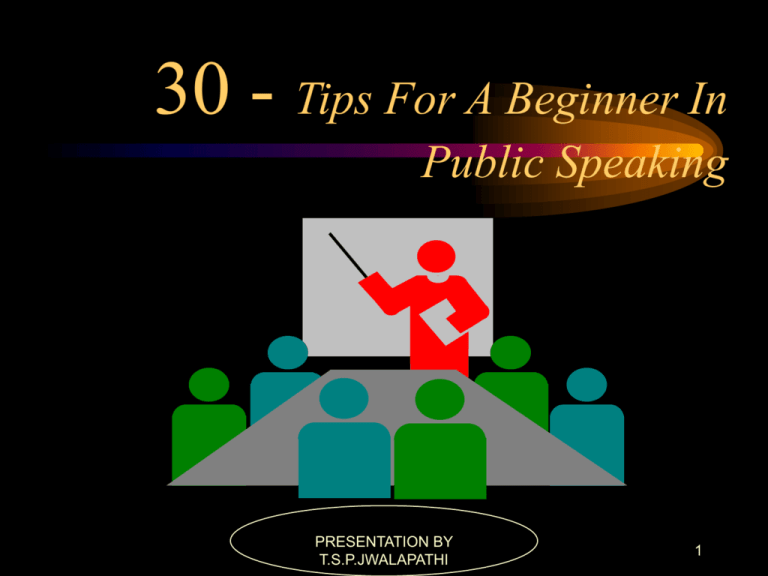
30 - Tips For A Beginner In Public Speaking PRESENTATION BY T.S.P.JWALAPATHI 1 Why Speak in Public ? The ability to speak in front of audience is considered as a sign of Self-confidence. 2 The unique features of this presentation is the tips given here are time tested over 25 years among youth 3 Public Speaking • Matter • Language • Style INTRODUCTION 4 Public Speaking • #1 • Start with a proper GREETING to the judges and audience Matter 5 Public Speaking • #2 • ORGANISE your speech into three basic parts • Attractive - INTRODUCTION • Meaningful - MAIN SPEECH • Clear & Crisp - CONCLUSION Matter 6 Public Speaking • #3 • MAKE the introduction BRIEF but ATTENTION GATHERING Matter 7 Public Speaking • #4 • OPEN your speech with any one of the four techniques : • Quotation • Example • Definition • Humour ( HUMOUR is little difficult to deliver ; unless you are good at telling jokes, DON’T try this technique ) Matter 8 Public Speaking • #5 • MAKE NO more than THREE major points in a three minutes speech Matter 9 Public Speaking • #6 • STRUCTURE the points as under • a) MAKE a single & clear statement of your point • b) ELABORATE the point in few sentences • c) Give one or two examples to support the point (sequence may vary c,a,b..) Matter 10 Public Speaking • #7 • BALANCE the points to consider all aspects of situation. Matter 11 Public Speaking • #8 • EMPHASIZE your arguments but don’t show bias. Matter 12 Public Speaking • #9 • MOVE from one point to another LOGICALLY & SMOOTHLY Matter 13 Public Speaking • #10 • END with a word of thanks. Matter 14 Public SpeakingLANGUAGE #11 • AVOID grammatical faults LANGUAGE 15 Public Speaking • #12 • USE correct pronunciation LANGUAGE 16 Public Speaking • #13 • USE the right word as far as possible ( You should have / develop a good vocabulary to do this ) LANGUAGE 17 Public Speaking • #14 • PREFER simple sentences. Similarly prefer direct speech (active voice) to reported speech (passive voice) LANGUAGE 18 Public Speaking • #15 CITE specific example instead of making generalizations. LANGUAGE 19 Public Speaking • #16 • CREATE word pictures • Example - say : “My friend Ram”, instead of “a friend” • Say : “It is hard as maths to me” , not weakly “it is hard” LANGUAGE 20 Public Speaking • #17 • USE pauses appropriately (when you make an important / major point - it will sink into the minds of your audience well) LANGUAGE 21 Public Speaking • #18 • SPEAK fluently LANGUAGE 22 Public Speaking • #19 • AVOID : • Putting on an unnatural / foreign accent LANGUAGE 23 Public Speaking • #20 • AVOID : • Use of big words to show off jargon, slang & cliches LANGUAGE 24 Public Speaking- STYLE • #21 • TAKE a good look at the audience, judges and the arrangements while you are waiting for your turn to speak. STYLE 25 Public Speaking • #22 • WALK at your normal pace to the dais / speaker podium when called to speak STYLE 26 Public Speaking • #23 • STAND erect, but not stiff STYLE 27 Public Speaking • #24 • LOOK at judges, audience and take a deep breath. STYLE 28 Public Speaking • #25 • SMILE at the most friendly face (pretty / handsome one) you can see in the audience - if you prefer ! Now begin speaking. STYLE 29 Public Speaking • #26 • KEEP your voice at a level that suits the size of the audience and the hall / room STYLE 30 Public Speaking • #27 • SPEAK at your natural speed (like when you talk to your friends or at home) STYLE 31 Public Speaking • #28 • LOOK at different sections of the audience once in a while. (Don’t stare at someone or a particular object in the room) STYLE 32 Public Speaking • #29 • ALLOW your hands the natural gestures they are used to, while you speak. STYLE 33 Public Speaking • #30 • After you finish your speech pause briefly, take a couple of steps back and then RETURN to your seat. STYLE 34 THE END 35
